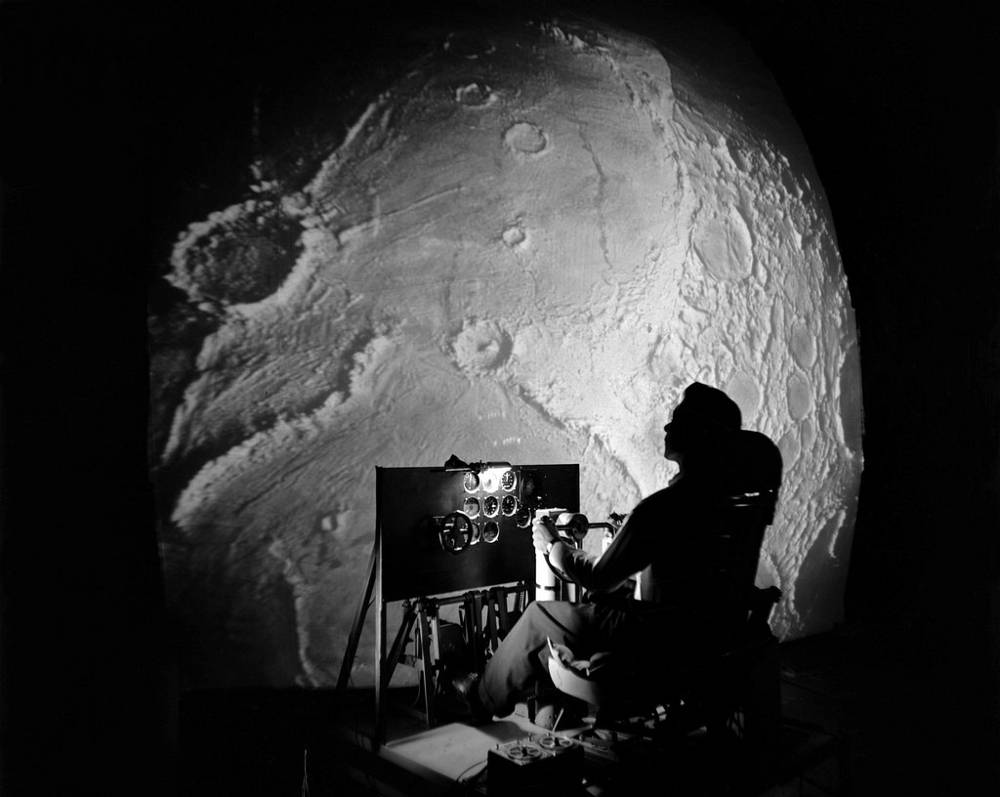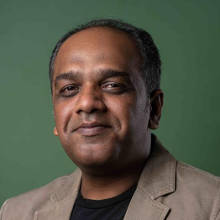[By NASA on The Commons. Apollo - Project LOLA. Project LOLA or Lunar Orbit and Landing Approach was a simulator built at Langley to study problems related to landing on the lunar surface.]
On January 23, 2018, a very finely crafted note went out to the world. It stated the XPRIZE Foundation has called off the $30 million challenge sponsored by Google. This, because after much deliberation, the organisers felt compelled to conclude that none of the five teams can meet the March 31, 2018 deadline to land a robotic spacecraft on moon, crawl 500 metres on its surface, and transmit back to earth high-definition videos and images.
Among the five contenders, one was from India—Team Indus led by Rahul Narayan. As stories go, it remains an under-reported one because there was much happening behind the scenes. Many in the government and the media desperately wanted it to fail. Failure is a compelling theme to gloat over and write about.
This is not to suggest no attempts were made either to document the potential of what is possible if the business of space travel is unbundled. That is why it was with much interest that I listened in to a discussion in Mumbai at an academia and business conclave organised by the SP Jain Institute of Management and Research and Founding Fuel, with Mint as the print partner.
When it was Rahul Narayan’s turn to speak, a question was asked of him. Now that the dream he nurtured for Team Indus to be among the first to land on the moon has come to an end, what muscle does he continue to retain in his head?
“The innocence of not knowing the risk,” he started by way of putting into perspective what it felt like when the journey started. Once the expedition started, clarity emerged on the path to take, what to ignore, and where may the future lie. “For me, it was the ability to disconnect, focus on the signal and cut the noise out. But our target remains the same. The reasons we are here, stays the same… Once you know what your baseline is, once you know where you want to go, then it is very easy.”
When Narayan stated that in as many words, it was evident Team Indus lost the race because it did not have the speed to make it by March 31—much like every other team. But it has now acquired the velocity to make it to the moon. The most recent reports have it that the team will stay at it until they land on the moon—very soon.
It is only a matter of time before Team Indus and the others who made it to the finals weave their paths to the moon. The critics and those gloating over the so-called failures may celebrate their “I-told-you-so” moment now. But they’re best ignored. Because as my favourite conductor and composer Leonard Bernstein famously described them once: “I’ve been all over the world and have never seen a statue of a critic.”
That there is much merit in the Team Indus story first emerged in an altogether different context and a conversation some time ago with a private equity investor who graduated as an engineer from IIT and then did a course in management. His life is of the kind everyone aspires to live—wooed by everyone keen to listen in to what he may have to say, well-versed, well-travelled, and over all else, well-funded. He is among the most successful investors in this part of the world.
It was inevitable then that when he asked (or rather stated) with some amusement written on his face: “Do you realise how blessed you are?” a puzzled look crossed my face.
“And why may that be?”
“I deal with people obsessed with speed when what I am looking for is those seeking velocity. Right now, where you are, you can choose to focus on velocity over speed.”
Whatever was that supposed to mean? What was he trying to suggest? What, after all, is the difference between speed and velocity? What is the metaphor here? And how does that make a man blessed?
I pushed him for some more pointers. “Every day I listen in to people of all kinds who pitch what ideas they have on how they plan to change the world. And others around me debate around whether or not to invest in them.” He suggested he must be polite and described all these discourses as “intellectual self-indulgence”—of the kind teenagers indulge in when they cannot find a partner to mate with. We laughed.
I made an attempt to bait him: “These are the kinds of lines the rich who have much time on hand throw at the wretched.” He didn’t bite. “Go, spend some time and think about it,” he said.
Pointers to where an answer may lie started to emerge in an altogether different conversation with an engineer who is also an angel investor. “When our team gets together, we ask ourselves, what is the one thing we ought to focus on right now and execute relentlessly better than anybody else can before we take something else up?”
There was something eerily similar in the language used by both. This is when it occurred to me he too was suggesting the focus ought to be on velocity. Not speed. To those who may have studied math, physics and engineering, it is evident right away. To those who haven’t, the subtle technical nuance embedded there isn’t. Speed measures how fast an object travels per unit of time. Velocity, while it factors speed as one metric to compute the distance travelled by an object, also takes note of the direction the object moves in.
If some perspective may be needed, if you run around a circle in record time, much speed will be on display and distance will be covered as well. But in the end, you would have gotten nowhere. As opposed to that, if you run across a straight line, or in some direction, you get someplace. This is velocity.
If looked at from a philosophical perspective into how we live, more perspective emerges. Why are some people always busy, but at the end of day feel have gotten no place? Is it possible they are running fast, but in circles? They expend much effort, but get no place.
The theme is the subject of a lovely book. It appears as a conversation between Ajaz Ahmed, the founder of AKQA, a global ideas and design company, and Stefan Olander, who heads digital marketing for Nike. Between the both of them and basis their experience, they attempt to nail down what may it take to acquire velocity.
They agree that there is much merit in speed because they operate in hyper competitive markets that are being redefined all the time. It is pertinent then that they cannot sacrifice speed and they must outrun everyone else. But they cannot lose sight of what direction they must head to. Else, when there is much uncertainty around, they can keep running and lose the way. These are times when they must know if they are on course. What metrics must be kept in mind and tools handy to measure if progress is being made? Because course corrections may be called for.
When corrections of such kinds are called for, speed must be sacrificed to figure out what may be the next best path to take so they get to the intended destination. To make up for the loss though, they must compute as well when may be the right time to accelerate. When all of these are computed, the ideal average pace can be arrived at. They also know it can neither be too slow, nor too fast. In fact, it allows one to compute what may be the outer limits of endurance to prevent burnout without sacrificing on speed and direction.
The eventual outcome is a potent force that can have a multiplier effect on any individual or entity’s contribution. When added to a human’s mental make-up, it creates room for much mental and physical muscle that can inspire. If a human example be needed, may that explain the phenomenon that is Roger Federer in Tennis?
But to exercise all of this at once is tough. Because oftentimes, when the landscape all around looks uncertain, what are the choices one can exercise? Acclaimed Chilean physicist, mathematician and poet Nicanor Parra who died last week offered a glimpse into how that can be made possible in a lovely poem, The Last Toast. It is as much poetry, as it is pragmatism.
Whether we like it or not,
We have only three choices:
Yesterday, today and tomorrow.
And not even three
Because as the philosopher says
Yesterday is yesterday
It belongs to us only in memory:
From the rose already plucked
No more petals can be drawn.
The cards to play
Are only two:
The present and the future.
And there aren’t even two
Because it’s a known fact
The present doesn’t exist
Except as it edges past
And is consumed...,like youth.
In the end
We are only left with tomorrow.
I raise my glass
To the day that never arrives.
But that is all we have at our disposal.
When looked at from all these perspectives, I am willing to bet on Team Indus and the future it is staring at. Lunar XPRIZE was all about speed. But the lessons learnt in staying the course until now, has given the teams that participated in the race much muscle. That confers upon them the muscle to accelerate and achieve velocity of the kind they need to stay on course relentlessly. It is only a matter of time before the teams that participated, Team Indus included, get to the moon.
The prize money has been forfeited. Everybody thinks the protagonists in the plot need hand-holding. That’s what it looks like from the outside. Much like it did to those who were at Ground Control on April 12, 1961, when Yuri Gagarin became the first human to journey into outer space. A very nervous bunch of people at ground control asked him over the crackling radio what does it feel like there.
“I feel fine. How about you?” he responded calmly.
(This article was first published in Livemint. Republished with permission.)


